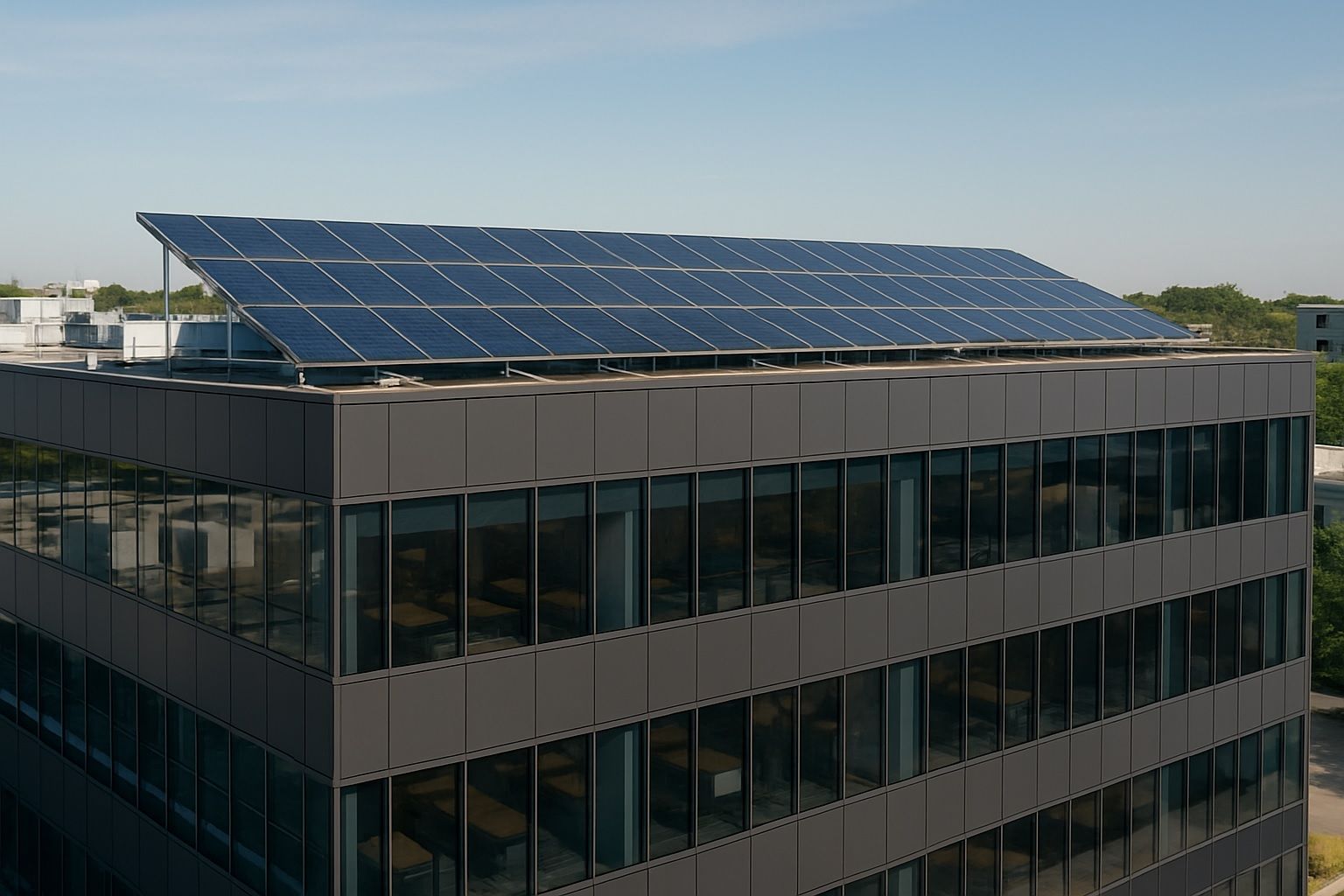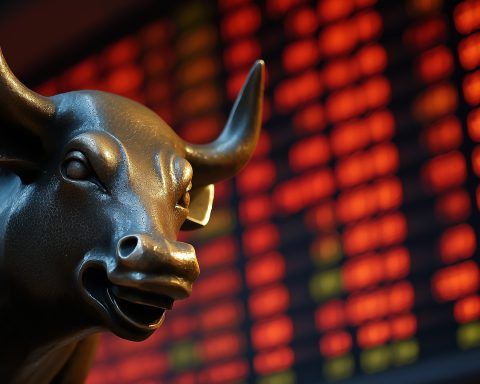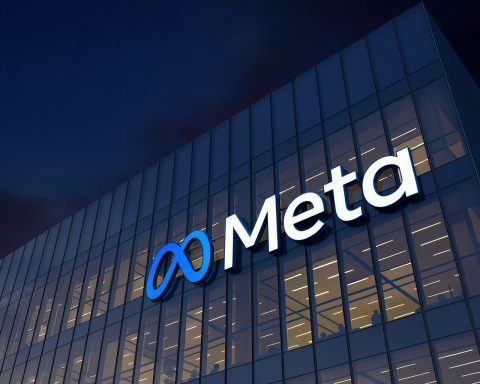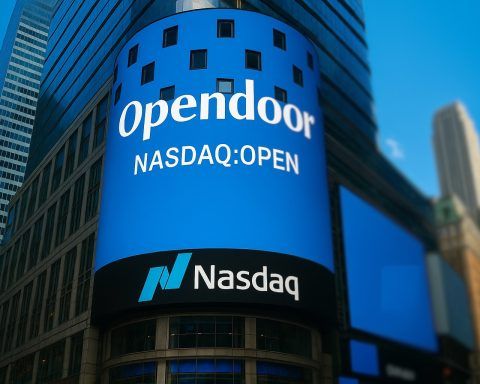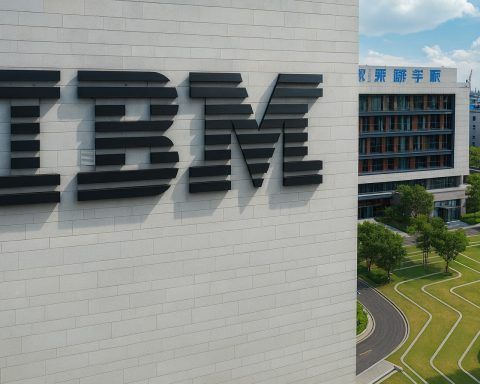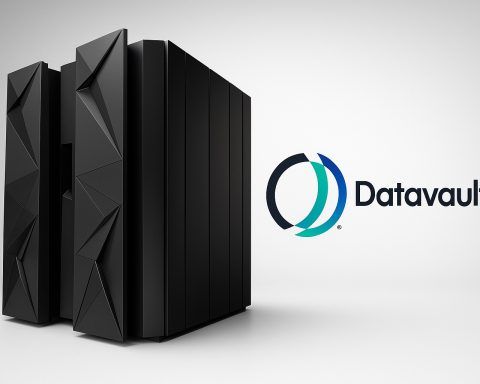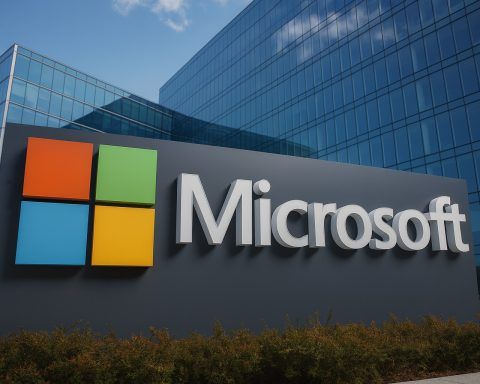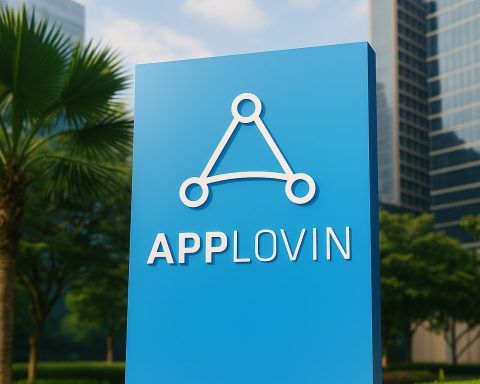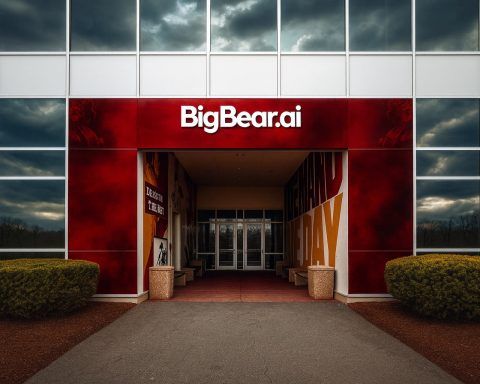- Rowan University opened the Jean & Ric Edelman Fossil Park Museum in late June 2025, a mass-timber building that runs fossil-fuel-free with geothermal heating and planned solar to achieve net-zero energy, designed by Buro Happold and Ennead Architects.
- Brooklyn College began drilling a 500-foot geothermal well in early June 2025 to retrofit a 20,000-square-foot building with a 100% geothermal heating and cooling system in a $10 million decarbonization project.
- Practice Greenhealth recognized 496 hospitals in June 2025 for climate-smart leadership, with a Top 25 cohort highlighted for exemplary performance in renewable energy use and resilience.
- USGBC rolled out a sustainability framework for K–12 school construction at the end of June 2025, aligned with forthcoming LEED v5 standards and emphasizing low-VOC materials, carbon-footprint analysis in early design, continuous air-quality monitoring, and material-ingredient disclosures.
- At Building Lasting Change 2025 in Vancouver (June 18–20, 2025), the Canada Green Building Council unveiled a pilot expansion of the Zero Carbon Building certification to include low-rise residential developments like townhomes.
- CarbiCrete showcased a cement-free concrete that substitutes Portland cement with industrial steel slag and injects captured CO2 during curing, enabling masonry blocks with dramatically lower embodied carbon.
- BŌK Modern released a Cor-Ten weathering steel facade system that self-seals against weather and allows thinner panels, reducing coatings and enabling durable, low-maintenance exteriors.
- AMP Lighting introduced a low-profile LED wall-pack with adjustable brightness from about 4,100 to 11,500 lumens, color-temperature options, an integrated photocell, 0–10V dimming, and IP66-rated housing.
- ISO-Aire’s portable HEPA purifier uses medical-grade filters and UV-C to capture or destroy 99.99% of airborne contaminants, with 5–6 year filter life and a 20+ year unit lifespan across 250–2000 CFM models.
- Global PropTech investment in June 2025 reached roughly $362 million, with large rounds for Holidu (~$52 million), Yieldstreet ($45 million), Runwise ($30 million), and AIM ($50 million), signaling a shift toward debt financing and scalable platforms.
Sustainable Building Projects & Initiatives
In late June, Rowan University in New Jersey opened a state-of-the-art fossil museum that practices what it preaches: the Jean & Ric Edelman Fossil Park Museum is constructed with extensive mass timber to cut embodied carbon and operates entirely fossil-fuel-free, using geothermal heating and planned solar power to achieve net-zero energy use [1] [2]. Designers from Buro Happold and Ennead Architects implemented passive energy strategies and geothermal heat pumps so that the museum runs on renewable energy, demonstrating a sustainable model for public buildings [3] [4]. This project highlights how innovative engineering can dramatically lower a facility’s carbon footprint while delivering modern functionality.
Elsewhere in the United States, academic and healthcare institutions undertook major green-building efforts. Brooklyn College in New York began drilling a 500-foot geothermal well in early June as part of a campus-wide decarbonization program [5]. Backed by the NY Power Authority’s Decarbonization Leadership Program, the project will retrofit a 20,000 sq. ft. building with a 100% geothermal heating/cooling system – a $10 million effort to cut emissions and eliminate fossil fuels on campus [6] [7]. College officials hailed it as a “cornerstone” initiative toward a cleaner, more resilient future for the university [8]. Meanwhile, nearly 500 hospitals across the U.S. were recognized in mid-June for “climate-smart” healthcare leadership [9]. Practice Greenhealth’s 2025 awards honored 496 hospitals for cutting waste, adopting clean energy, and building climate-resilient infrastructure. The Top 25 honorees earned praise for “exemplary performance and innovation” – from renewable power use to preparedness for extreme weather [10]. This reflects a broader movement in healthcare to pair patient wellness with environmental stewardship. As one Practice Greenhealth director noted, these hospitals are proving that healthcare excellence and environmental responsibility go hand in hand [11].
In the education sector, the U.S. Green Building Council (USGBC) launched new initiatives to green America’s schools. At the end of June, USGBC rolled out a sustainability framework for K–12 school construction, building on the forthcoming LEED v5 standards. The updated guidance emphasizes healthier learning environments through better indoor air quality, low-emission materials, and life-cycle carbon analysis in school designs [12] [13]. “We’re working with school districts to ensure new buildings don’t just meet benchmarks, but actually support the well-being of students and teachers,” a USGBC spokesperson said [14]. Key features of the guidelines include use of low-VOC materials, integration of carbon footprint analysis in early design, continuous air quality monitoring, and transparency tools like material ingredient disclosures [15]. Though voluntary, these best practices are expected to influence procurement—especially for schools seeking state/federal climate resilience funding [16]. USGBC is piloting the program with districts in several states, hosting workshops (in partnership with its Center for Green Schools) to help facility teams write greener specs and meet emerging standards [17]. The organization also launched a Local Government Leadership Program to help cities embed LEED and sustainability into building codes and public projects [18]. The push for healthier, low-carbon schools exemplifies how policy, investment and education are converging to scale green building practices.
Canadian green-building leaders likewise doubled down on climate-friendly construction. At the Building Lasting Change 2025 conference in Vancouver (June 18–20), industry and government stakeholders announced major collaborations and standards expansions aimed at resilient, energy-efficient buildings [19] [20]. The Canada Green Building Council (CAGBC) used the event to unveil a pilot expansion of its Zero Carbon Building certification to include low-rise residential developments, like townhomes and small apartments [21]. This move responds to growing demand for low-rise sustainable housing and aligns these projects with Canada’s carbon-reduction goals. CAGBC President Thomas Mueller emphasized that green building is now a business imperative as much as an environmental one. “We’re not just addressing climate risks – we’re strengthening the economy, creating value for owners and future-proofing assets,” Mueller said, noting that the conference’s momentum showed an industry ready to deliver smart technologies and scalable innovation for a more competitive, low-carbon built environment [22]. The conference also saw an awards gala honoring zero-carbon new builds and transformative retrofits, underscoring how Canadian projects are raising the bar for sustainable design.
Innovations in Green Construction & Building Systems
Multiple sustainable construction technologies made news during June–July 2025, promising to reduce buildings’ environmental impact. In materials, alternatives to conventional concrete and steel gained traction. CarbiCrete, a Canadian cleantech company, showcased an innovative cement-free concrete that replaces Portland cement with industrial steel slag and injects captured CO₂ during curing [23]. By substituting cement (a highly polluting component) with this repurposed waste product, the technology enables masonry and precast producers to create concrete blocks with drastically lower embodied carbon [24]. Every cement-free block produced not only avoids the huge CO₂ emissions of cement manufacturing but actually sequesters CO₂, turning concrete production into a form of carbon capture [25]. Industry analysts note that replacing cement in concrete is one of the biggest single opportunities to cut embodied carbon in construction [26], and CarbiCrete’s approach could help builders achieve significant sustainability gains while also repurposing industrial byproducts.
In building envelopes, low-maintenance facade solutions are emerging that enhance durability and aesthetics with minimal environmental cost. For example, BŌK Modern released a Cor-Ten weathering steel facade system that naturally resists corrosion without need for paint or frequent upkeep [27]. This cladding uses a special steel alloy that forms a stable rust-like patina on its surface when exposed to the elements. The patina layer protects the metal from further corrosion and gives a distinctive architectural look [28]. Unlike standard steel or painted aluminum facades that might require regular sandblasting, repainting or replacement, weathering steel improves with age – it effectively self-seals against the weather. The material’s strength also allows thinner panels for the same structural rigidity, reducing material usage [29]. BŌK’s modular panels can be custom-cut into various patterns or reliefs, adding design flexibility for architects [30]. Such facade innovations point toward more sustainable exteriors: longer service lives, fewer coatings or chemicals, and a raw beauty that complements contemporary design.
Lighting and indoor environmental systems also saw advancements. A new generation of smart LED lighting fixtures was introduced to improve energy efficiency and user flexibility. For instance, AMP Lighting launched a low-profile LED wall-pack light for commercial exteriors that features field-adjustable brightness and color temperature settings [31]. This slim LED luminaire allows facilities to dial in the light output (from ~4,100 to 11,500 lumens) and choose warm, neutral, or cool white light via onboard switches [32]. It also comes with an integrated photocell for dusk-to-dawn automation and supports 0–10V dimming by default [33]. The fixture’s durable, IP66-rated housing with a corrosion-resistant finish and built-in surge protection ensures it can withstand harsh outdoor conditions [34]. By combining adaptive controls with robust design, such LED systems can minimize energy waste (providing light only when and how it’s needed) and reduce maintenance in the long run.
Indoor air quality tech is likewise evolving, driven by heightened awareness of health and efficiency. In mid-June, an advanced HEPA air purification system was highlighted for use in schools and offices [35]. The ISO-Aire portable purifier employs medical-grade HEPA filters and UV-C sterilization to capture or destroy 99.99% of airborne contaminants – from viruses and bacteria to mold spores, allergens and volatile organic compounds (VOCs) [36]. Originally developed for hospitals, this unit brings clinical-level filtration to everyday settings. It’s designed for quiet, continuous operation, with filters lasting 5–6 years and a 20+ year unit lifespan [37]. Models range from 250 to 2000 CFM to suit different room sizes, and the units plug into standard outlets for easy deployment [38]. Especially in schools, improving indoor air quality has dual benefits: protecting occupant health and potentially boosting cognitive performance. The introduction of long-life plug-and-play air purifiers reflects a trend of making healthy building features more accessible and straightforward for facility managers to implement.
PropTech Investments and Smart-Building Trends
Property technology (PropTech) – spanning everything from smart building management to real estate fintech – saw significant global activity during June–July 2025. Monthly investment data show a sector adapting to economic conditions and maturing rapidly. In June alone, roughly $362 million was invested worldwide in PropTech and related real estate tech, signaling a structural shift in how capital is flowing into the “built environment” tech space [39]. Notably, many later-stage PropTech startups are now raising growth capital through debt financing and strategic corporate investors rather than traditional venture capital. According to an analysis by CRETI, the high interest rate environment in 2025 has prompted established PropTech firms with steady revenue to seek non-dilutive debt deals, indicating that parts of the sector have become credit-worthy and cash-flow positive [40] [41]. For example, in June several U.S. PropTech firms – from Waltz, a platform for international real estate investors, to ZestyAI, a climate-risk analytics provider for insurers – secured multi-million dollar loans instead of equity rounds [42]. This marks a turning point: PropTech is no longer solely the domain of speculative VC bets, but includes stable businesses that lenders are willing to back.
At the same time, late-stage equity investments are concentrating on companies that look more like critical infrastructure for real estate than experimental startups. Large June funding rounds went into institutional-grade platforms: for instance, Germany’s vacation rental portal Holidu raised about $52 million, a U.S. digital wealth platform Yieldstreet raised $45 million (Series D), and New York-based Runwise secured $30 million to scale its AI-driven building operations software [43]. Another notable raise was AIM, a U.S. company developing AI-powered building management systems, which attracted a $50 million round [44]. These companies serve enterprise clients and manage real assets at scale (e.g. large property portfolios, multifamily buildings), indicating that PropTech solutions have become core to real estate operations. As the CRETI report observed, venture risk has shifted from proving the tech concept to executing on market expansion and data integration for these firms [45].
Meanwhile, early-stage PropTech funding is still active but laser-focused on specific technologies like artificial intelligence and vertical SaaS (software-as-a-service) that streamline niche real estate workflows. Investors are backing startups that apply AI/automation to fragmented processes such as lease management, underwriting, and construction planning [46] [47]. In June, for example, Parkade (US) raised $10 million to monetize underutilized parking via an app, Occupier (US) raised $16 million for tenant/broker transaction management software, and several pre-seed rounds went to AI tools like Prop-AI, Blocktype, and Roomstory.ai for tasks including property valuation, site planning, and tenant prospecting [48]. Smaller PropTech deals popped up globally – from a leasing workflow startup in Greece to a construction planning tool in France [49] – underscoring sustained appetite for tech that reduces friction in real estate transactions and building management. One analyst noted that AI and automation have “reached the real estate operator’s desktop” – these are not abstract demos, but job-specific, ROI-driven tools aimed at property managers, investors, and contractors [50].
Industry observers believe this bifurcated funding trend (big money for scaled platforms, targeted VC for new tech) reflects a maturing PropTech landscape. A comprehensive 2025 PropTech Trends Report released in early June by Property Technology Magazine (PTM) paints a bullish picture of the sector’s growth and integration into mainstream real estate. Key findings from “The Great Rebuild” report include:
- Market Momentum: The global PropTech sector was valued around $35–40 billion in 2024 and is projected to exceed $100 billion by 2032, nearly tripling in size [51]. Despite recent economic headwinds, investor confidence in PropTech’s long-term trajectory remains strong.
- Capital Resilience:$42 billion was invested in PropTech worldwide in 2023 across 80+ countries [52]. Even with a venture funding slowdown in other tech fields, real estate tech has attracted substantial capital, indicating resilience and perceived opportunity in the digital transformation of property.
- AI Everywhere: Approximately 70% of recent PropTech deals involve an AI component, and about $3.2 billion was invested specifically in AI-centric real estate tech in 2024 [53]. From AI-driven underwriting for mortgages to machine-learning in building energy management, artificial intelligence is pervasive in new PropTech offerings.
- Smart-Building Surge: An estimated three out of four new commercial buildings now launch with embedded IoT smart building systems [54]. In 2025, having IoT sensors and connected controls for things like HVAC, lighting, and access is becoming the default standard for commercial real estate development, rather than the exception.
- Regional Shifts: The U.S. still captures roughly 27–40% of global PropTech value, maintaining a lead in investment and innovation, but the Asia-Pacific region is the fastest-growing, with PropTech expected to expand ~20.5% annually in APAC through 2032 [55]. This highlights increasing PropTech activity in markets like China, India, Southeast Asia, and Australia, often driven by rapid urbanization and high-tech adoption in those regions.
The PropTech Trends Report also introduced a “Top 50 PropTech” index, ranking the sector’s leading companies by growth, innovation and impact [56]. In the report’s commentary, PTM’s Editor-in-Chief Bianca Ford remarked that real estate technology has “crossed the Rubicon” – it is now entrenched across every phase of the property life cycle [57]. From “AI-driven underwriting to IoT-enabled building operations,” PropTech solutions have become fundamental to how modern real estate is financed, constructed, and managed [58]. Ford noted that this digital and sustainable shift – dubbed “the Great Rebuild” – is reshaping what is historically a $120 trillion asset class (global real estate), bringing new efficiencies and climate-friendly innovations to an industry long viewed as conservative [59]. The upshot is that PropTech is no longer a side niche; it’s driving a renaissance in property and construction, backed by significant capital and a convergence of tech trends (AI, cloud, IoT) that are reaching maturity simultaneously.
Real-world investment news from June–July supports these observations. In the Middle East, for example, PropTech startups are riding the AI wave. Dubai-based Prop-AI announced it raised $1.5 million in pre-seed funding in June to scale up its AI-driven real estate platform [60]. Prop-AI’s solution uses artificial intelligence and machine learning to automate property search, evaluation and decision-making for buyers and investors, essentially aiming to be a “Bloomberg of real estate” by aggregating data and insights for smarter investments [61] [62]. The startup has already tripled its revenue in Q1 2025 and even earned an AI Seal of Excellence from the Dubai government’s AI center – the first PropTech company to do so [63]. With the new capital, Prop-AI plans to deepen its data integrations and expand beyond the MENA region into Europe [64] [65]. Investors from Saudi Arabia, Bahrain and the UAE participated in the round, reflecting a strong regional interest in leveraging AI to modernize the real estate market. Venture firms said Prop-AI is “well-positioned to lead the next wave of intelligent PropTech solutions across the Middle East and beyond”, as real estate in the region becomes more digital and data-driven [66]. This case exemplifies how emerging markets are also embracing PropTech innovation, often focusing on transparency and efficiency improvements (e.g. aggregating fragmented property data, or offering new tools to understand market value) to attract global investors and streamline transactions.
Policy Drivers and Market Outlook
Global policy developments in June–July 2025 underscored an urgent push toward greener, smarter buildings – and these regulations are poised to further catalyze innovation and investment in the sector. In Europe, the EU officially rolled out new measures to implement the revised Energy Performance of Buildings Directive (EPBD), a cornerstone of the European Green Deal aimed at decarbonizing the building stock. On June 30, the European Commission presented an implementation package (including new regulations and guidance documents) to help member states enforce stricter energy standards in buildings [67] [68]. Effective changes in the EPBD will require that all new buildings are “zero-emission” by 2028, meaning very high energy efficiency with any remaining needs covered by renewables [69]. It also mandates that 75% of existing buildings built before 2000 undergo deep energy renovations (to improve insulation, windows, heating systems, etc.), given that the bulk of Europe’s buildings are decades old and energy-inefficient [70]. By 2030, at least 15% of non-residential buildings must meet high thermal performance standards, and fossil-fuel heating subsidies will be phased out entirely by the end of 2025 [71]. These binding targets are backed by EU funding – over €150 billion earmarked for green renovations – and enforced through tools like Energy Performance Certificates and minimum energy performance standards that will penalize the worst-performing properties [72].
EU Energy Commissioner Dan Jørgensen highlighted that buildings account for ~40% of Europe’s energy use and emissions, and over half of EU gas consumption, so improving their efficiency is both “good for the climate and good for our citizens” in lowering bills [73]. The Commission’s guidance aims to create a stable investment environment as countries transpose the EPBD into national law by 2026 [74] [75]. This includes common data templates for tracking building stock progress and digitalization initiatives to ease the renovation process [76] [77]. For the construction industry and cleantech firms, Europe’s regulatory push provides clarity and massive opportunity. Analysts note a “once-in-a-generation” boom in demand for energy retrofit solutions – from insulation materials to smart energy management systems – as the 2030 and 2033 deadlines approach [78] [79]. In fact, with 85% of EU buildings built before 2000 and most poorly insulated, meeting the new standards will require deep retrofits at an unprecedented pace [80]. Companies specializing in high-performance insulation, efficient HVAC, solar integration, and IoT building controls are expected to thrive. One market analysis pointed out that plastic foam insulation manufacturers like Kingspan and stonewool makers like Rockwool are scaling up production to avoid shortages, as demand for retrofit materials is “primed to explode” under the EU mandates [81] [82].
North America is also seeing supportive policy movements. In the U.S., while federal climate legislation (like 2022’s IRA) is already channeling funds into green building upgrades, administrative actions continue in 2025. In early June, the White House announced plans for tech-driven permitting reforms to speed up construction of sustainable infrastructure [83]. And on the state level, programs like New York’s building decarbonization initiative (evidenced by Brooklyn College’s geothermal project) are being bolstered by climate legislation and bond funding. Canada, for its part, has set Net Zero Building codes in motion for new construction by 2030, and cities like Vancouver and Toronto are introducing their own green building requirements. These regulatory trends, combined with rising investor ESG expectations, mean that developers and property owners globally face growing pressure and incentives to adopt energy-efficient designs, renewable energy systems, and smart-building technologies.
Looking ahead, industry experts forecast that green-building tech and PropTech will increasingly converge. The drive to cut carbon emissions and operating costs is accelerating the adoption of IoT and AI in buildings – effectively merging sustainability goals with digital transformation. For example, smart building management systems that optimize energy use in real time can dramatically reduce consumption (an immediate climate win) while saving money for owners. Similarly, AI-powered analytics can guide preventive maintenance to extend equipment life, or analyze energy data to verify compliance with new regulations. Many of the innovations highlighted in June–July 2025 – from carbon-sequestering concrete and mass timber structures to AI-driven property platforms – align with broader climate objectives and market demands.
Despite economic uncertainties, the market outlook for green building tech remains robust. High oil and gas prices in early 2025 have only underscored the importance of energy independence, reinforcing the business case for efficient buildings and on-site renewables. Governments are injecting capital through green stimulus funds and stricter codes, effectively creating a favorable environment for cleantech and PropTech firms. According to the PTM report, the PropTech sector’s rebound from recent headwinds is underway, and stakeholders are setting a “bold vision for the decade ahead” [84]. In short, the developments of June–July 2025 show a world moving steadily toward smarter, lower-carbon buildings. From cutting-edge materials and sensors to billion-dollar funds and policies, the pieces are falling into place for a more sustainable built environment – one that harnesses technology to create healthier cities, resilient infrastructures, and efficient homes for generations to come.
Sources:
- Green Building News – Project and product updates (June–July 2025) [85] [86] [87] [88] [89] [90] [91]
- Construction Owners (news blog) – USGBC K–12 guidelines (July 1, 2025) [92] [93]
- Practice Greenhealth – 2025 Environmental Excellence Awards (June 2025) [94] [95]
- U.S. Green Building Council / Center for Green Schools – New initiatives (June 2025) [96]
- Canada Green Building Council – Building Lasting Change 2025 recap (June 23, 2025) [97] [98]
- CRETI PropTech Investment Brief – June 2025 funding analysis [99] [100]
- Property Technology Magazine via BusinessWire – “2025 PropTech Trends: The Great Rebuild” (June 5, 2025) [101] [102] [103]
- Wamda News – Prop-AI funding announcement (June 17, 2025) [104] [105]
- European Commission – EPBD implementation news (June 30, 2025) [106] [107]
- Politico EU / Ainvest – EU Green Deal building requirements (July 1, 2025) [108].
References
1. greenbuildingnews.com, 2. greenbuildingnews.com, 3. greenbuildingnews.com, 4. greenbuildingnews.com, 5. greenbuildingnews.com, 6. greenbuildingnews.com, 7. greenbuildingnews.com, 8. greenbuildingnews.com, 9. greenbuildingnews.com, 10. greenbuildingnews.com, 11. greenbuildingnews.com, 12. www.constructionowners.com, 13. www.constructionowners.com, 14. www.constructionowners.com, 15. www.constructionowners.com, 16. www.constructionowners.com, 17. www.constructionowners.com, 18. www.constructionowners.com, 19. www.cagbc.org, 20. www.cagbc.org, 21. www.cagbc.org, 22. www.cagbc.org, 23. greenbuildingnews.com, 24. greenbuildingnews.com, 25. greenbuildingnews.com, 26. greenbuildingnews.com, 27. greenbuildingnews.com, 28. greenbuildingnews.com, 29. greenbuildingnews.com, 30. greenbuildingnews.com, 31. greenbuildingnews.com, 32. greenbuildingnews.com, 33. greenbuildingnews.com, 34. greenbuildingnews.com, 35. greenbuildingnews.com, 36. greenbuildingnews.com, 37. greenbuildingnews.com, 38. greenbuildingnews.com, 39. creti.org, 40. creti.org, 41. creti.org, 42. creti.org, 43. creti.org, 44. creti.org, 45. creti.org, 46. creti.org, 47. creti.org, 48. creti.org, 49. creti.org, 50. creti.org, 51. www.businesswire.com, 52. www.businesswire.com, 53. www.businesswire.com, 54. www.businesswire.com, 55. www.businesswire.com, 56. www.businesswire.com, 57. www.businesswire.com, 58. www.businesswire.com, 59. www.businesswire.com, 60. wamda.com, 61. wamda.com, 62. wamda.com, 63. wamda.com, 64. wamda.com, 65. wamda.com, 66. wamda.com, 67. energy.ec.europa.eu, 68. energy.ec.europa.eu, 69. www.ainvest.com, 70. www.ainvest.com, 71. www.ainvest.com, 72. www.ainvest.com, 73. energy.ec.europa.eu, 74. energy.ec.europa.eu, 75. energy.ec.europa.eu, 76. energy.ec.europa.eu, 77. energy.ec.europa.eu, 78. www.ainvest.com, 79. www.ainvest.com, 80. www.ainvest.com, 81. www.ainvest.com, 82. www.ainvest.com, 83. www.constructiondive.com, 84. www.businesswire.com, 85. greenbuildingnews.com, 86. greenbuildingnews.com, 87. greenbuildingnews.com, 88. greenbuildingnews.com, 89. greenbuildingnews.com, 90. greenbuildingnews.com, 91. greenbuildingnews.com, 92. www.constructionowners.com, 93. www.constructionowners.com, 94. greenbuildingnews.com, 95. greenbuildingnews.com, 96. centerforgreenschools.org, 97. www.cagbc.org, 98. www.cagbc.org, 99. creti.org, 100. creti.org, 101. www.businesswire.com, 102. www.businesswire.com, 103. www.businesswire.com, 104. wamda.com, 105. wamda.com, 106. energy.ec.europa.eu, 107. energy.ec.europa.eu, 108. www.ainvest.com
